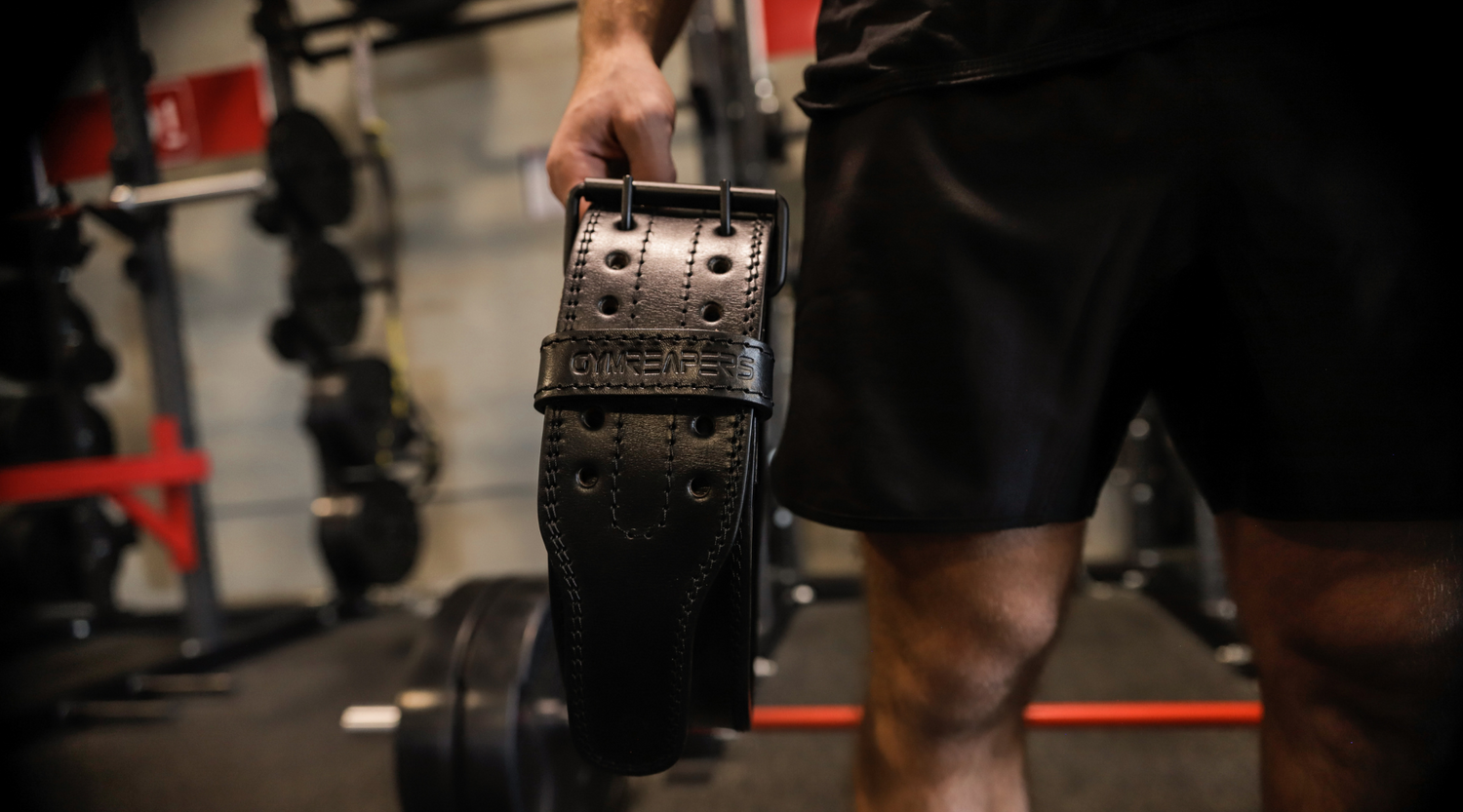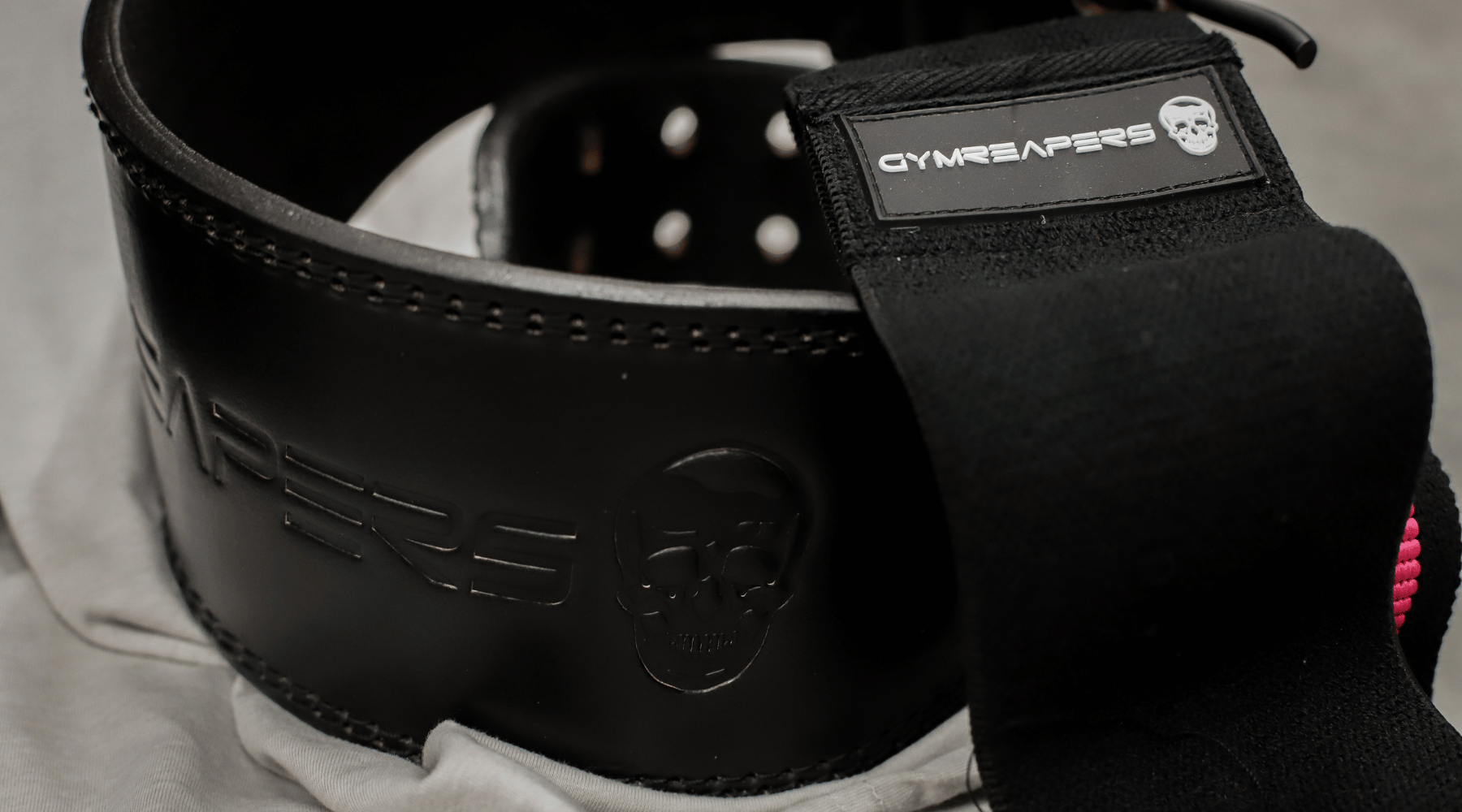Lifting belts are made from different materials, and depending on the construction of them you may or may not be able to wear it right out of the box.
Most lifters do not need to do anything special to break in a lifting belt, especially if it is made from nylon. However, some tips include: wearing it regularly, storing it rolled up, and working it with your hands. Thicker leather belts (13mm) may require a lot more time to break in and specialized methods.
While you should buy a belt based on the specs you need for lifting (not based on the break-in period), it is important to be aware that some belts take more time than others (and others take no time at all to break in).
In this article, we will dive into everything you need to know about break-in periods and how to minimize the time needed.

Do You Need To Break In A Lifting Belt?
Most lifters who train with nylon or thinner leather belts (7mm and some 10mm belts) will not need to do anything out of the ordinary to break in a lifting belt. By wearing it throughout your workout and storing it rolled up in your bag, you will be able to break in the belt in a few short weeks.
Lifters who train in thicker, more specialized belts, such as 13mm leather belts, will find they will need to spend more time breaking in the belt and may need to try some of the other steps below to break in the belt.
What Types of Belts Require A Break In Period
All leather belts will require a break-in period. The thicker the leather belt, the more time it takes to break in.
Since most lifters will opt for purchasing a leather lifting belt because they’re more durable, have greater levels of support, and can be used in competitive sports settings, most lifters will need to deal with some sort of break-in period.
Nylon belts, on the other hand, which are primarily used by Crossfitters or recreational lifters, typically don’t require a break-in period.
- Related Article: Are Lifting Belts Safe? Yes, Follow These 6 Rules Though
How Long Does It Take To Break In A Lifting Belt

A leather lifting belt can take anywhere between 2-12 weeks to break in, with 6 weeks being the average time period.
This is assuming that you train 3-4 days per week, and are using the belt at least some point during those training sessions.
Below are three factors that will impact break-in times:
Belt Material
As I mentioned, all leather belts will have a break-in period.
However, leather belts come in a variety of different types of leather, ranging from PU leather to genuine leather.
- PU leather is synthetic leather that is artificially made. While it is more affordable and requires the least amount of break-in time (2-3 weeks) compared with other types of leather, it is lower quality, and therefore less durable.
- Genuine leather is leather made from animals and while it is stiffer than PU leather and requires more break-in time (4-6 weeks), it provides the most support and will last a long-time (i.e. it won’t show signs of wear and tear).
Note: All Gymreapers belts are made from genuine leather.
Belt Thickness

Thicker belts (often leather) take longer to break in. If you have a 13mm belt, you can expect that it will take up to 3 months to break in, whereas a 10mm belt should only take 4-6 weeks.
It is important to note that you shouldn't be purchasing a belt based on break-in periods, but rather on your lifting needs.
If you need a thick rigid belt for lifting, then get that belt. The break-in period is just part of the process.
With that said, we compared 10mm vs 13mm belts, and there are very few use cases for 13mm belts outside of professional sports settings.
How Frequently You Wear It
The more you wear the belt, the quicker you can break it in.
If you only wear the belt for a few sets a session and work out a 1-2 times per week, it may take you a few weeks or months to get the belt to a point where it is “broken in”, especially thick belts.
Pro tip: Try wearing the belt looser in warm-ups to softly break it in, spend more time in it, and then tighten it up for your harder sets.
4 Steps For Breaking In A Lifting Belt
Your best bet for breaking in a lifting belt is to simply wear it as much as you can initially.
This will help you find the right fit and have the belt fit better to your body dimensions.
You can however do some of the things below to break in your belt quicker (if you need to).
Step #1: Keep it Rolled Up in Your Gym Bag
Storing the belt rolled up in your gym bag is not only a good way to save space, but it helps the thicker belts become more pliable and ready to be worn around the torso.
Rolling your belt up (loosely or tightly) can also be combined with adding some heat to help the break-in process further.
Step #2: Warm It Up
Before you go baking your new lifting belt, understand the goal here is to apply low heat to the belt to allow the leather to loosen up some and make it more pliable.
This is the same method you would use to break in a baseball glove.
All you need to do is leave it outside (in the shade) in warmer months and let the leather get warm.
Important: DO NOT leave the sun in direct sunlight or the leather may shrink under too high of temperatures.
If it's cold, you could try using a hairdryer (don’t place the heat source too close).
You could also use an oven, and put the oven on the lowest possible setting (and crack the door). If you do that, just be careful to not burn yourself on the metal prongs, buckle, or lever.
Step #3: Keep Wearing It

Like any fine leather good, it takes time to break in a thick belt. Thick of the leather shoes or bag you own.
There is no way around that. If you are still struggling to break in your belt, you need to be more proactive about wearing it.
This doesn't mean you need to rely upon it for support, but you should be wearing it (even during warm-ups) and taking it on and off frequently to help it become more pliable during the break-in period.
Step #4: Work the Belt With Your Hands
You don’t need to be overly rough with the leather belt, but you can bend it, roll it, and fold it to help the leather relax some.
This doesn't need to be anything excessive, but doing a little bit (in conjunction with the above steps) can be just enough to break it in.
What Does It Feel Like When A Lifting Belt Is Broken In
Most nylon belts do not need a break-in period at all, and when worn will fit snugly around your torso and be comfortable.
Thicker belts, especially ones made of leather, may feel rigid and not flush around your torso, which can produce some rubbing and discomfort around the torso and hips (from the leather belt rubbing on the skin/bony areas).
Before a belt is broken-in, you might even get some bruising on your hips from the belt digging in as you perform exercises like squats and deadlifts.
Once you have broken the belt in, however, you will notice the belt “molds” more to your own body dimensions, is more pliable, and can be worn tighter than before without being too uncomfortable (mainly not rubbing in areas).
If you experienced any bruising initially, this should start to go away, too, as the belt breaks-in.
What To Do If Your Belt Still Doesn't Feel Like It's Broken In

If you still feel like you need to break your belt further, you can try to apply some mink or olive oil to the belt and work the belt with your hands (as discussed above).
This should only be done with leather belts.
I’ve done the mink oil method previously, and it definitely works. But only use it after you have exhausted the other methods above.
As an added benefit of using mink oil to break-in the lifting belt, it also helps protect the leather from cracking (and keeps it looking great).
Belts That Don't Require A Break In Time
Most nylon belts do not require break-in times, as the nylon is more pliable than leather. Out of the box, nylon belts can be worn immediately and offer good support for general fitness movements and dynamic exercises.
The best nylon belts that don’t require a break-in period are:

Belts That Require Minimal Break-In Time
Some belts that can be broken in rather quickly are ones that are made of thinner leather material, such as a 7-10mm lifting belt. These belts offer more support than a nylon belt, but can take a couple of uses to get the fit you want.
Some of the best leather belts with minimal break-in periods are:
Belts That Require Maximal Break In Time
When wearing a heavy-duty 13mm belt, you most likely want it to feel stiff and “not broken in”, as this is the purpose (to have a very rigid belt to support you).
Slight modifications to fasteners to adjust the fit can also go a long way in making it fit as best as it can (given that it is made of very thick leather).
Below is one of the most supporting leather belts you can find on the market, however, it can take many months to have it broken in (and even then, it may still feel stiff, which again, is what you want).













Leave a comment
All comments are moderated before being published.
This site is protected by hCaptcha and the hCaptcha Privacy Policy and Terms of Service apply.